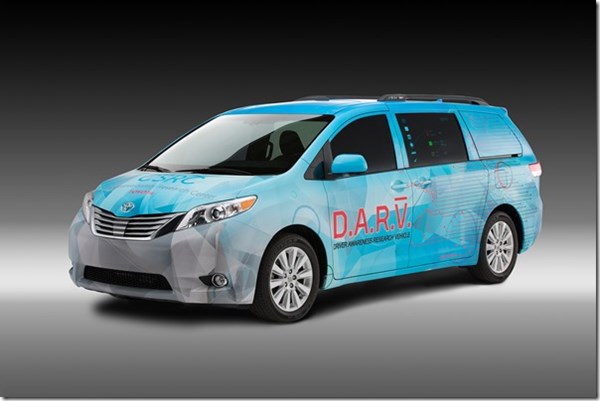What Are They Doing at the Toyota CSRC?
When Toyota had the recall crisis that began in the summer of 2009, there might have been some concern—as unfounded as the alleged issues with the vehicles in question—with regard to Toyota and safety.
When Toyota had the recall crisis that began in the summer of 2009, there might have been some concern—as unfounded as the alleged issues with the vehicles in question—with regard to Toyota and safety.
The company certainly put that to rest in January 2011, when it established the Toyota Collaborative Safety Research Center (CSRC) at the Toyota Technical Center in Ann Arbor, Michigan. It was initially funded with $50-million for five years of research into active safety, distracted driving, and at-risk populations (e.g., kids, seniors, pedestrians).
Toyota is seriously serious about safety.

The Toyota Driver Awareness Research Vehicle
That $50-million has been supplemented by an additional $35-million, which means the research will continue into the next decade. Chuck Gulash, director of CSRC, says that while it isn’t uncommon for OEMs to conduct safety research, what is different about the CSRC is that they’re working in an open, collaborative manner, sharing whatever developments they make with industry. “It doesn’t matter if there is a Toyota badge on the front of the car or something else,” he says.
For example, they’ve developed, although with Indiana University-Purdue, as part of a program focused on standardized test protocols for pedestrian pre-collision systems, two articulated mannequins, “Steve” and “Steve, Jr.,” which Risi Sherony, senior principal engineer at CSRC, explains and demonstrates on this week’s “Autoline After Hours.”
These are not “crash test dummies.” Those are generally deployed inside vehicles for crash testing. Steve and Steve Jr. are used outside of vehicles.
That is, they are used to mimic pedestrians crossing the road.
There are at least a couple of differences between these mannequins and others that are used for similar tests.

Steve takes a walk
One is that they have motors that allow their limbs to mimic actual walking or running (although they are moved via an overhead wire system). The other is that their “skin” is a fabric that has radar reflectivity that mimics human skin.
Sherony says that both of these characteristics are important so that they are able to accurately model actual crashes with people.
And the instructions for building “Steves,” once completely validated and codified, will be made openly available for the benefit of all.
Sherony talks about further developments in this area, such as creating models for both deer (a big issue in states like Michigan) and bicyclists.
John McElroy, “Autoline” host, Jeff Gilbert, automotive reporter for WWJ 950, and I talk with Sherony about the activities at CSRC. Then the three of us discuss a variety of subjects, including the hits and misses at the New York Auto Show, Tesla’s particular talent for garnering all manner of attention even with what is arguably an infinitesimal number of car sales, and much more.
See it here:


.jpg;width=70;height=70;mode=crop)